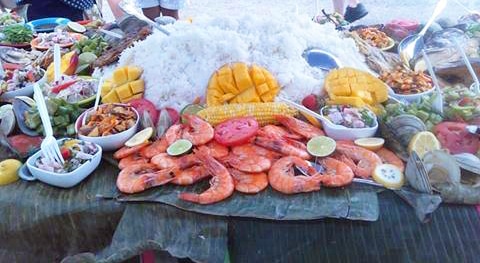views

This is probably not the first time you’ve heard that you are what you eat. In other words, the food you eat directly affects your overall health. This is because nutrients in food promote better health and potentially protect you from developing diseases. Meanwhile, unhealthy foods have been shown by numerous research to increase disease risk. As some foods trigger health problems while others offer protective qualities, this is where holistic diet comes into the conversation.
In this article, we’ll take a closer look at what a holistic diet is and how you can make your Pinoy dishes a bit healthier.

What is Holistic Diet?
The primary principle behind holistic healing dictates that health should be looked at as a system. This system comprises four components: the physical, psychological, emotional, and spiritual. They must be balanced to help a person achieve optimal health. As food is our primary source of nutrients, it also plays a vital role in keeping the balance in check.
Holistic eating requires you to eat mindfully. It is a full circle. In a holistic diet, you should be aware of what you are eating, why you are eating, and when you are eating. Thus, you need to recognize real hunger (physical) and eat when you are hungry, not just because you are emotional or stressed. It’s also vital that you know what you’re eating: what are the ingredients? Are they healthy and good for you?
As you start eating mindfully and healthily, you will also begin to feel healthier physically, psychologically, emotionally, and eventually, spiritually, too.
The Basic Principle Behind a Holistic Diet
A holistic diet is one that focuses on the consumption of whole foods, which are food items and ingredients that have been processed or refined as little as possible. They are supposed to be free of additives, preservatives, and other artificial substances.
How do you know if a product can be considered a whole food? Here’s a simple trick: if something is raw and/or it kept its basic structure or form from source to market, it means it has undergone little to no processing. Meanwhile, for packed products, check the label. As much as possible, go for options that do not have chemical ingredients. If you can’t read, spell, or pronounce most of the ingredients, the product is obviously full of additives that may not be good for you.
When you opt for whole foods, it’s easy to know where they come from. This, in turn, allows you to better judge if it’s good or bad for your health. It also becomes easier to find out what nutrients your food item contains (if you don’t know yet).
You Are as Healthy As Your Food
It’s quite simple: eat healthy to be healthy.
Holistic health practitioners and enthusiasts believe that food is more than just the body’s source of energy; it can also serve as medicine. A holistic diet, in particular, can help keep your body elements balanced.
Moreover, the Academy of Nutrition and Dietetics also state that consuming nutrient-rich food is the first step to becoming healthier. Nutrients and vitamins found in whole foods may provide protection against illnesses and medical conditions. Furthermore, they also help keep the digestive system healthy, balanced, and functioning well. This is vital as maintaining gut health is essential to maintaining overall health.
How You Can Apply Holistic Diet in a Pinoy Table?
With so many fast-food restaurants, coffee shops, and milk tea shops sprouting here and there, it can be difficult to strictly follow a diet. It’s not even surprising if you’re one of those who’ve been struggling with yo-yo dieting, which has been believed to be the reason why many find it hard to keep the weight off.
In the Philippines, the word “diet” is often associated with eating less. However, when you eat less but do not watch what you eat, your body will not get the nutrients it needs. As a result, you will feel hunger and cravings more often. As you give in to those cravings, you run the risk of dropping your “diet”, putting you in that cycle of yo-yo dieting.

The key to a successful diet is knowing and eating the right foods. Fortunately, it’s not that hard to adopt a holistic approach to diet and nutrition if you’re in the Philippines. Our markets and grocery stores are actually full of whole food choices.
The problem is, most think healthy food choices are more expensive and inaccessible. In some cases, this is sadly true. Instant noodles, canned goods, and processed meat are generally cheaper than vegetables, fish, and meat. However, there are ways to save and still eat healthily. For instance, cook adobong kangkong instead of beef broccoli. Prepare nilaga or tinolang manok instead of fried chicken — anything with soup can be shared and enjoyed by more people. In place of white pasta, consider making pancit using bean sprouts. Speaking of bean sprouts, who doesn’t love lumpia? As long as you know your ingredients, it’s easier to experiment in the kitchen!
A Final Word
Studies show that one’s dietary habits influence their susceptibility to diseases. Some foods offer protective benefits, while others can contribute to the development of health problems. But as mentioned above, holistic health is made up of several factors. Diet alone cannot replace the treatments necessary for a full recovery if you fall ill. Following a proper diet should be considered as a preventative and maintenance measure. The earlier you start watching what you eat, the longer it will take for age or genetics-related health conditions to bother you.












